Squares and Bevels for Wood-Working Purposes
"Mastering Squares and Bevels in Woodworking Craftsmanship"
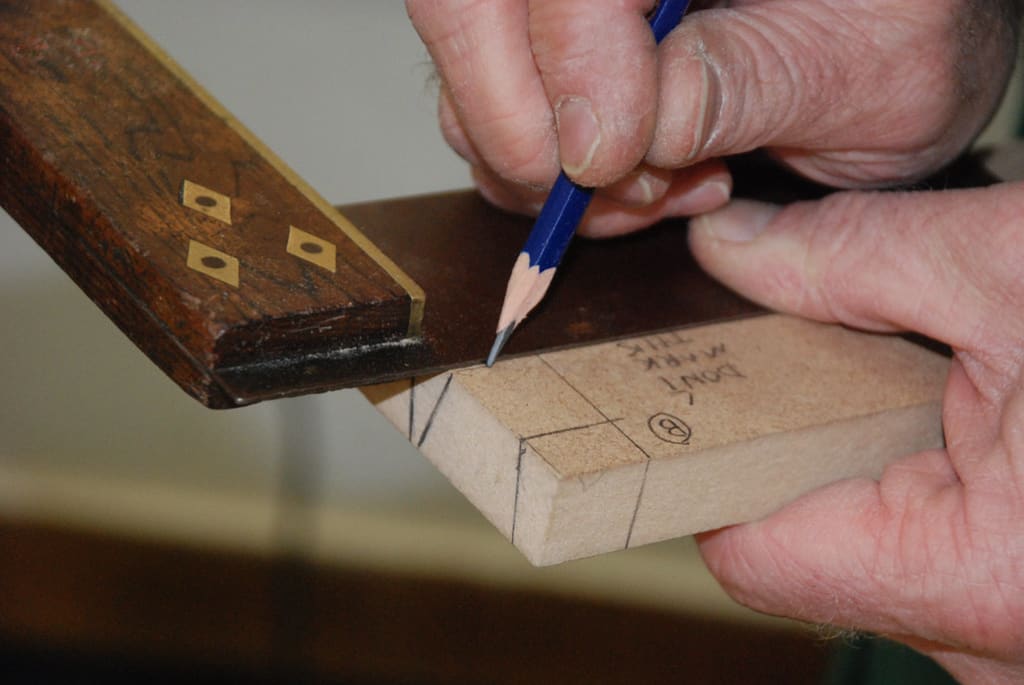
Squares and Bevels: A Brief History
Until quite recent times, all woodworkers made theirs own squares and similar tools, using suitable pieces of hard, well-seasoned wood. The most common types were large, L-shaped squares for testing the work and smaller tools for setting out, marking mitres and so on, the latter usually having a stop or fence along the shorter stock.
Tools of this type remained in general use until about the middle of the eighteenth century, when the carpenters tool makers of London and Sheffield introduced try squares with steel blades and ebony or rosewood stocks edged with brass and fancy inlaid riveting, borrowing the methods of their colleagues, the cutlers and pocket knife makers.
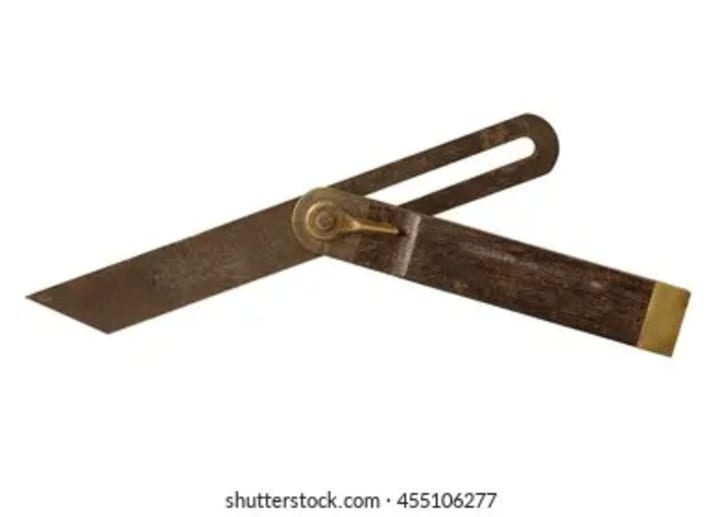
Try Square
Size: Blade: 150mm to 300mm
Handle or Stock: 25mm to 30mm
Material: Blade-steel, Stock-cast iron, plastic, hardwood
Use: To mark out or check the work for square
The try square is used to mark a line at right angles to an edge and to check that the corners of a frame or joint are accurate. The parallel sided metal blade is mounted at one end in the center of a wider stock and secure by rivets.
A superior try square has an L-shaped blade which extends down the length of the stock, which is riveted in either side. This type of square is always accurate, whereas the accuracy of those mounted at the top only can be affected by rivet wear.
The tool forms and accurate 90 degrees. both on the inside and the outside edges and on some squares on the top inside corner of the stock is cut to angle of 45 degrees for marking a 45 degrees line. The effective length of the blade can be extended by resting a steel rule against the edge when the tool is in position.

Carpenter's Steel Square
Size: Blade Length- 300mm to 600m, Tongue Length- 200mm to 400mm
Material: Steel
Use: To mark out the work for squaring and to check the angles used in the construction of roof framing
A standard carpenters steel square is marked out in inches or millimeters and is used to set out a job on building boards or to check the squareness of a large frame. Being made from one piece of steel, it is extremely accurate. Standard metric and imperial numerical markings run outward from the right angle. Many squares are also marked with various tables which enable the carpenter to set out staircases or rafters and to calculate areas or, given the other dimensions, the hypotenuse of a triangle.
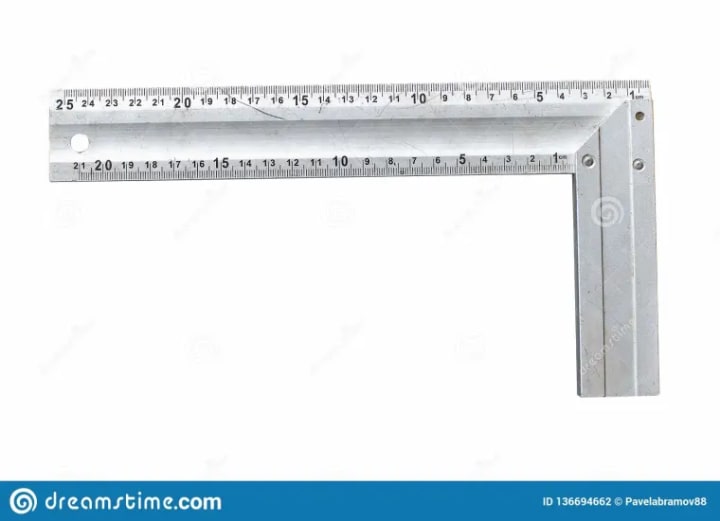
Mitre Square
Size: Blade Length- 200mm to 300mm
Material: Blade- Steel or Hardwood
Use: To mark out both halves of a mitre joint at 45 degrees
A mitre square is constructed like a square, but the blade projects from both sides of the stock to form internal angles of 45 degrees and 135 degrees. A line can be marked to 45 degrees to a true edge by pressing the stock against the edge and aligning the blade with the mark. In this way to halves of mitre joint can be marked out. The mitre square can also be used to check the accuracy of the angle when the joint has been cut.
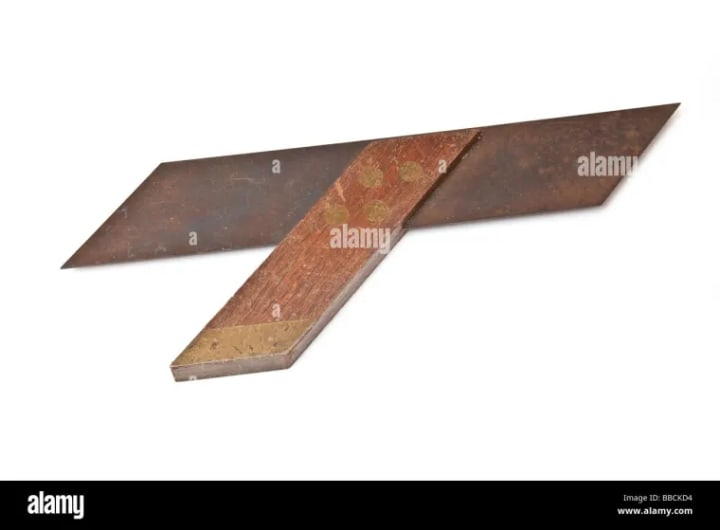
Sliding Bevel
Size: Blade Length- 190mm to 330mm
Material: Blade- Steel, Stock- Hardwood, plastic
Use: To mark out or check angles on the work
The sliding bevel has a parallel sided steel blade, which can be adjusted to form any angle with the stock. Extending approximately half the length of the blade is a slot which enables the blade to be projected or retracted to suit the circumstances. A locking lever secures the blade finger tight at any angle. Other patterns have a slot head screw, which must be tightened with a screwdriver. Set the bevel to the required angle with the aid of a protractor. Alternatively, Set up the required angle from a true edge of a board, or a bench top and align the bevel to that.
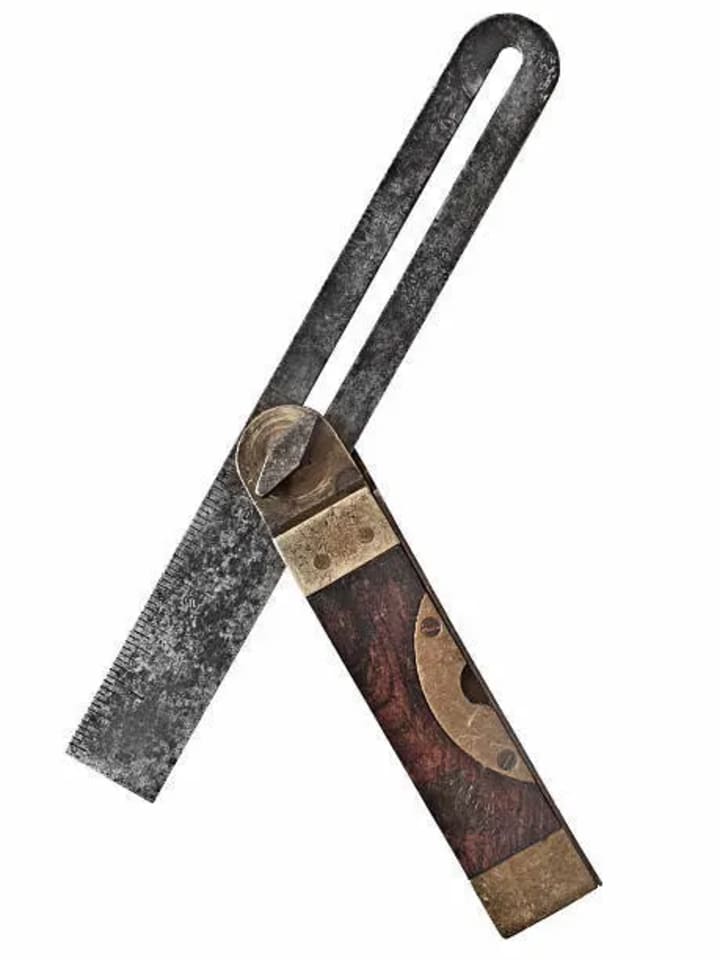
Centre Finding Gauge
Size: up to 150mm in diameter
Material: Steel
Use: To mark the center of round stock
The center finding gauge is a simple tool which enables you to rapidly and accurately locate the center of a round metal bar or turned wooden section. The tool has a 90 degrees notch cut in one side, and a blade which bisects the notch with its straight edge. The center finding gauge is rotated approximately one third of the circumference of the work and a second mark made, intersecting the first. For absolute accuracy the tool should be rotated once more and a third mark made. The center of the work is indicated by the intersection of the lines.
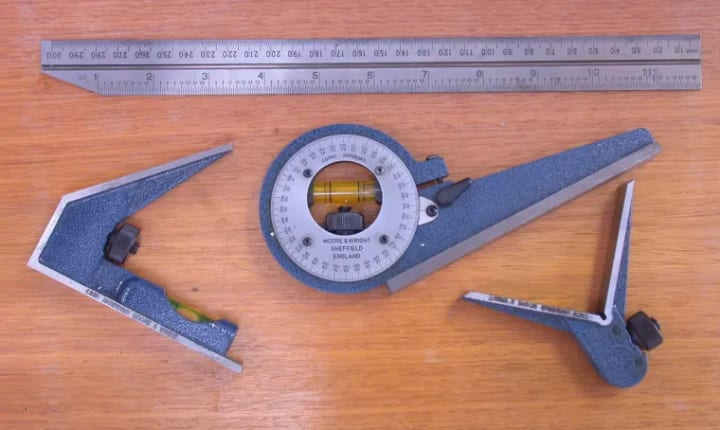
Combination Square
Size: Blade Length- 300mm, Head Length- 110mm
Material: Blade- Steel, Head- Steel, Cast Iron
Use: To work as a steel rule, try square, mitre square and leveler.
The combination square is a steel rule, securely clamped in a square head. A rounded groove runs along the center of one side of the rule. When the rule slides into the head, the groove then engages a spring loaded pin which is locked in place by tightening a knurled nut. The head can be adjusted to any position on the rule.
The tool can be used as a try square with a blade length of up to 250mm while the 45 degrees face on the head transforms the tool into mitre square. it can also be used as a depth gauge to measure the depth of a mortice for instance. (The measurement is read where the rule enters the head). The square head is also fitted with a level vial and a removable scriber may be provided with the square head.
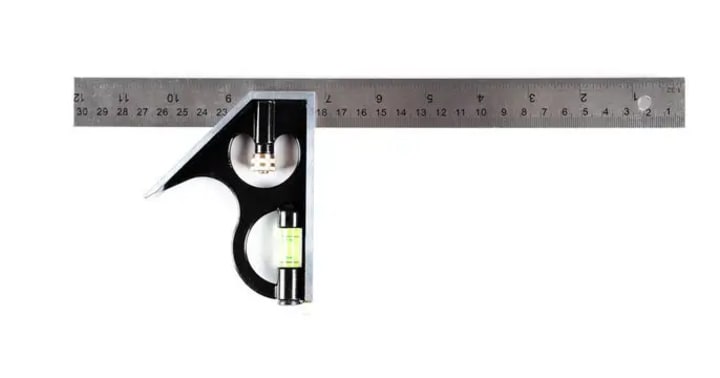
Combination Set
Size: Blade Length- 300mm to 600mm
Material: Blade- Steel, Head- Steel
Use: To work as a try square, mitre square, protractor, center square, level and rule.
Although the combination square is commonly sold with a square head only, combination sets are available which clamp to the steel rule in the same way to form a center square or protractor. The tool can also be placed over a beveled edge to measure the exact angle. The center head is slipped on to the rule and locked in any position. It can be used to find the center of a disk of up to 460mm in diameter. The protractor head can be used to mark off or measure any angle through 180 degrees. When the protractor head is fitted with a level vial it can measure the level of any vertical or horizontal surface.
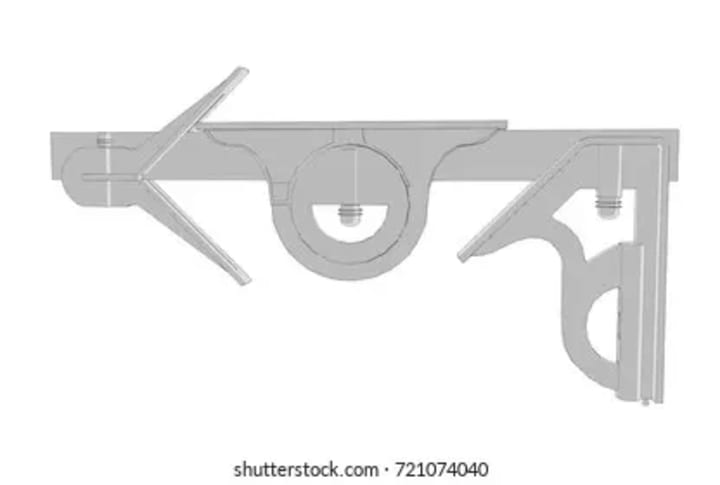
Engineer's Try Square
Size: Blade Length- 75mm to 1000mm, Stock Length- 65mm to 535mm
Material: Steel
Use: To mark out or check metal for square
Engineers try square are made entirely from metal to guarantee constant accuracy. although larger squares with long blades are used in engineering workshops, the smaller tools with blades up to 150mm in length are more common in home workshops. A notch is cut in the stock in line with the inside edge of the blade for accurate measurement even when there is a burr on the edge of the work.
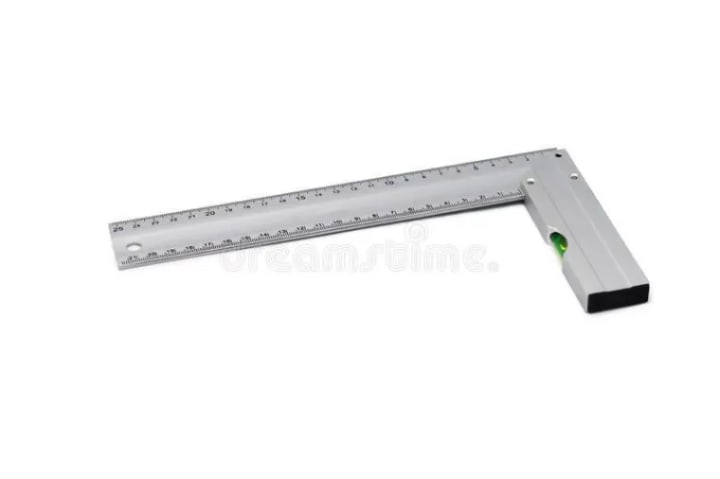
Engineer's Sliding Bevel
Size: Blade Length- 75mm, Stock Length- 75mm
Material: Steel
Use: To mark out or check angles on metal
The engineers bevel is a small, accurately machined tool, which is used to mark out or measure various angles on metal work. Once the blade has been adjusted to the required angle it is locked in place by a knurled nut.
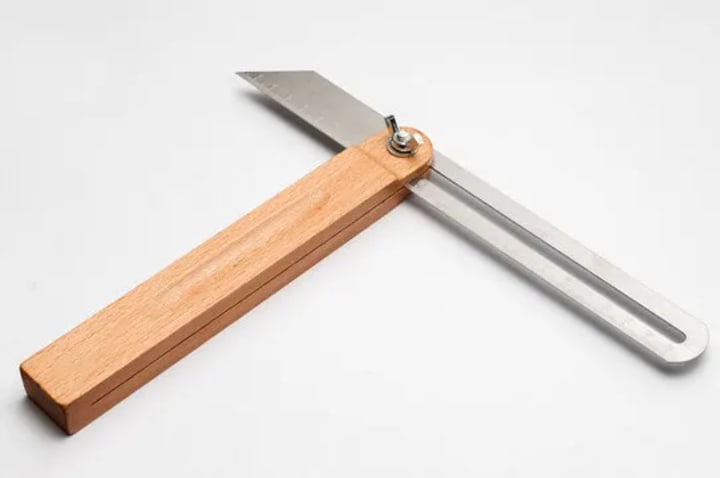
Dovetail Template
Size: As required
Material: Wood or Brass
Use: To mark out dovetail joints
Dovetail templates, which are used to set out dovetail joints, are often homemade tools. The shoulder locates over the end of the wood and the sides of the tail are marked against the edge of the template.
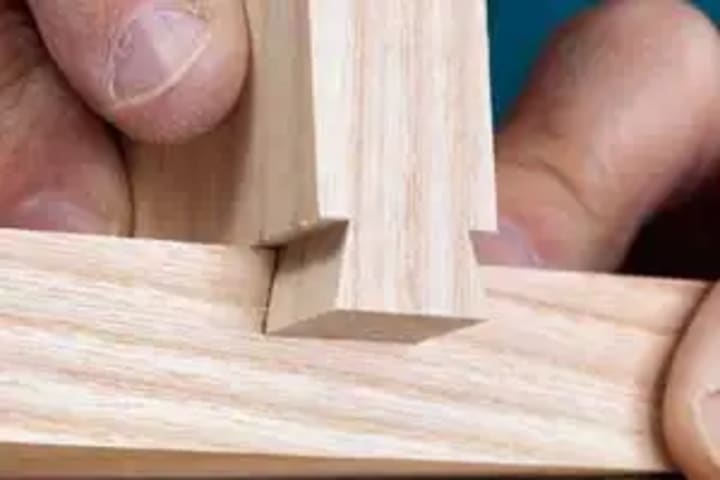
Glazier's T Square
Size: 600mm to 1800mm
Material: Boxwood
Use: To guide a glass cutter square across a sheet of glass
The glaziers T square is in effect a wooden rule morticed at 90 degrees into a stock. The stock is pressed against the edge of a sheet of glass and a glass cutter is used to score a line against the ruler.
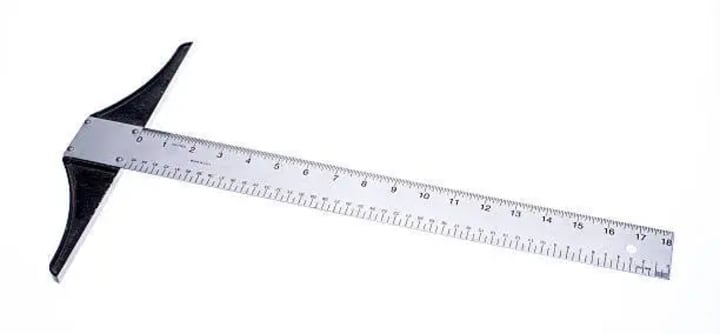
About the Creator
Temoor Dar
💡Topic: Entrepreneur and Writer💡
♟️Hobbies: Traveling, Poems, Playing Chess and Solving Puzzles♟️
🎂Born: July 7, 1991🎂
📍Born in Stockholm, Sweden, and now a Londoner since 1996📍
📚Lifelong Learner📚
🌟Wisdom from Mentors🌟






Comments (1)
Great work! Good job!